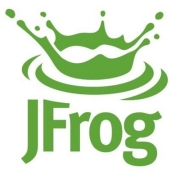DevSecOps integrates security practices within the DevOps process, ensuring quicker and safer software delivery by embedding security directly throughout the development cycle.
DevSecOps promotes a culture where security becomes a shared responsibility across the development, operations, and security teams. This integration reduces vulnerabilities early in the development lifecycle and improves the overall quality of software by automating security workflows. Continuous monitoring and real-time feedback loops enable swift response to potential threats without slowing down delivery timelines. Engineering teams collaborate efficiently, balancing speed with security.
What are key features to consider in DevSecOps?In the financial industry, implementing DevSecOps allows for rapid deployment of updates while addressing stringent regulatory requirements. In the healthcare sector, it enhances patient data security and application integrity. E-commerce companies leverage DevSecOps to protect customer data and ensure transaction security.
DevSecOps is beneficial for organizations by fostering a security-first mindset that aligns with development and operational goals, enabling faster software delivery with reduced risks and improved compliance.
| Product | Market Share (%) |
|---|---|
| Snyk | 20.4% |
| Checkmarx One | 13.5% |
| GitLab | 10.7% |
| Other | 55.400000000000006% |






























Integrating security into your DevSecOps process helps you identify vulnerabilities earlier in the development lifecycle. Continuous security integration ensures risks are mitigated rapidly, reducing the chances of data breaches and ensuring compliance. By embedding security into every phase, you enhance overall security posture, maintaining a robust defense system against evolving threats.
What Tools Best Support a DevSecOps Implementation?When implementing DevSecOps, utilizing tools like Jenkins for CI/CD, Docker for containerization, and OWASP ZAP for security testing can streamline your processes. These tools help automate workflows and ensure security checks are part of each development stage. Choose tools that integrate seamlessly with existing systems to maximize efficiency and security effectiveness.
How Do You Measure the Success of DevSecOps Practices?Measuring the success of DevSecOps involves evaluating security incident frequency, deployment speed, and vulnerability detection rates. Successful practices lead to fewer incidents and faster deployments with fewer security risks. Regular metrics analysis provides insights into areas needing improvement and tracks the effectiveness of security integrations.
What are Common Challenges in Adopting DevSecOps?One major challenge is organizational culture shift, as traditional silos between development, security, and operations must be dissolved. Implementing DevSecOps requires upskilling teams and adapting new processes which can be resistant. Overcoming these challenges involves strong leadership and continuous education to foster collaboration across departments.
Why is Automation Critical in DevSecOps?Automation in DevSecOps streamlines the integration of security checks within the CI/CD pipeline, allowing for faster error detection and resolution. Automated tools reduce manual effort, decrease human error, and enhance efficacy by providing consistent security practices. Through automation, you achieve rapid, reliable deployments while maintaining high security standards.